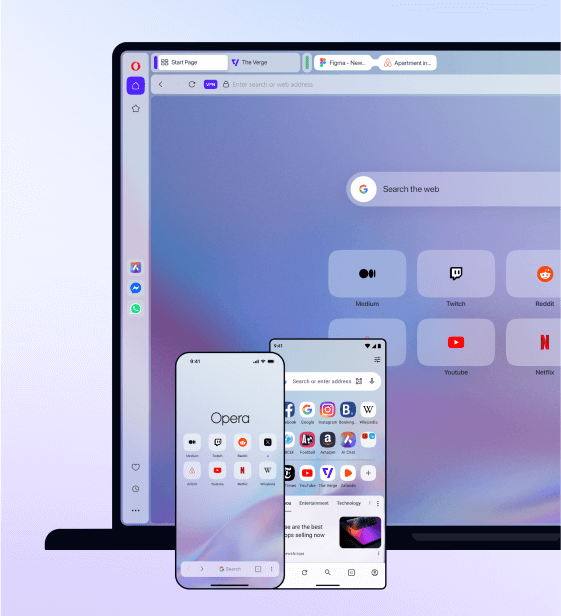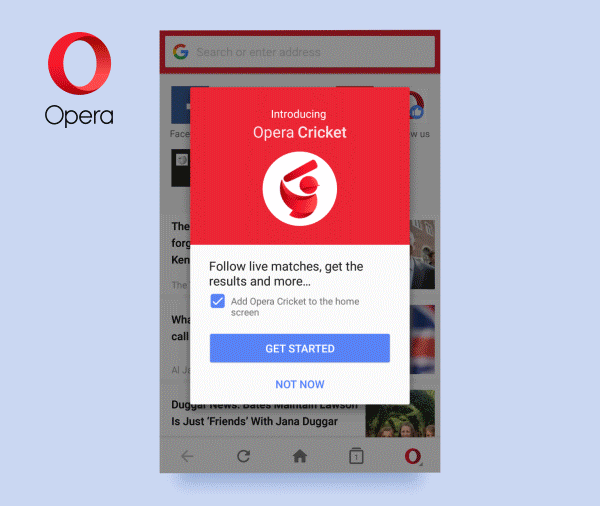Video chat from within your browser with 1Click

With ever expanding geographies, more and more people are taking on to video chat to keep in touch with those that matter to them. But whether it’s creating a login, downloading the right plugins or struggling with low network speeds, video chatting still remains a cumbersome process.
Hrishikesh Kulkarni realized that gap and came up with an innovative video calling solution called 1Click. The solution uses WebRTC which enables users to video chat from their browser itself. WebRTC is also supported by Opera for Android , so you can video chat with your friends from within your mobile browser, without downloading a separate application.
Since browsers are at the heart of what he does, for our latest edition of India Buzz, we caught up with Kulkarni, Founder & CEO, 1Click to have a quick chat on how he is taking video chatting to the next level.
What is 1Click?
With the increase in technological innovations and businesses going online, people are increasingly forgetting to provide their customers with a personal touch. I wanted to bring back that human touch in the business process, which is when I decided I should come up with 1Click. It brings personalization by enabling video/audio based interaction in your browser on your website or app. It is probably the most simple and straightforward video calling software. Businesses do not need any plug-ins, downloads, installation codes or conference rooms to incorporate with it. We believe browser is the new conference room and a great way to bring back the personal touch element. That is the sole reason for us to design and develop a browser driven video infrastructure for business enterprises.
How is 1Click’s user experience better than other WebRTC enabled platforms or even OTT apps?
1Click is cloud based video communication platform. Using our video software, people can record conversations and listen to them at a later stage. Another important feature that we provide is screen sharing. This improves the clarity of the conversation. Since ours is not a mesh design where video/audio is sent peer to peer to each participant. Instead we intelligently leverage the cloud servers to mix and bridge the video/audio. Every participant in the 1Click video call transmits/receives only one video stream regardless of the size of the group video call. That is big differentiation when we compare ourselves to Google Hangout or other WebRTC based solutions.
Does video chatting on mobile increase data bills significantly and especially when people are on fluctuating mobile networks, does 1Click even work?
Video chatting solutions typically drive up the data usage on the mobile network. But 1Click, with its transcoding video platform, improves the efficiency of a call by ensuring each participant sends/receives only one stream of video. Unlike other WebRTC or Google Hangout solutions which transmit/receive multiple video streams (per participant).
And, yes I do believe 1Click will work well despite fluctuating mobile networks for the simple reason that our video chat has an extremely low bandwidth requirement. We are aware that 2G/3G connection quality in India is not consistent throughout the geography but we are still the best option in places where mobile connection works best.
Since you are in a profession of connecting people, what are some of the other things that interest you personally?
I read a lot on history and art and evolutionary biology. I believe the oldest cultures and religions have survived thanks to extremely stable and viral mass communication techniques. I am fascinated by intersection of Arts and Technology. (Yes, Steve Jobs of Apple has been a big inspiration). I have been toying with the idea of Virtual museums which lets children explore art and history. Besides that, I love travelling and photographing my travel experiences too.
Any message that you would like to give Opera users in India?
Browsers are no more passive softwares which are used only to consume information. Opera is a great mobile platform which users and developers in India can leverage to build interactivity and produce content. Users in India should look at browsers like Opera and technology like HTML5/CSS3/WebRTC to develop fun interactive learning experiences.
















